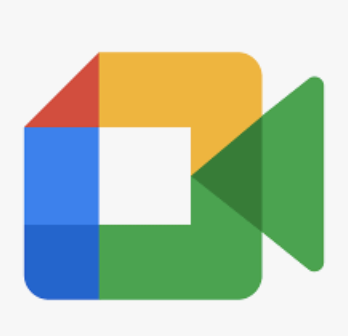
Learning With Google Meet

Overview
Google Meet is a communication platform which includes instant messaging, video chat, SMS and VOIP features. With Meet, classrooms can connect with each other and collaborate on various topics.
This should be a teacher led activity as students under 13 should not be using Google Meet without parental permission. This will take several class periods the first time as the teacher should go over the ground rules for a videoconference.
Learning Objectives
Students will:
- Be able to engage effectively in collaborative discussions.
- Be able to follow agreed-upon rules for discussion.
- Be able to ask and answer questions from a discussion with elaboration and detail.
- Be able to create questions to communicate clearly with others.
- Be able to share knowledge with others effectively.
- Be able to work collaboratively within their own peers as well with other classrooms via Google Hangouts.
Vocabulary
Vocabulary Words:
-
Communication: Communication is the exchange of information or news.
-
Collaboration: Collaboration is the action of working together.
Pre-planning
To prepare for this lesson:
-
Create a Google account if you do not already have one.
-
Download the appropriate app necessary for your device.
-
Allow time to create lesson topic questions.
-
Here are good instructions from Google for learning how to use Google Meet.
-
Watch the video tutorial on the Google Meet Interface.
Accommodations
See Accommodations Page and Charts on the 21things4students.net site in the Teacher Resources.
Steps
Directions for this activity:
-
Google Meet can be used in all the content areas to collaborate and share learnings. This can be done in one school with multiple classrooms as well as with schools locally, other states or countries.
-
Create a classroom project where students will be collaborating with each other.
-
The teacher will open Google Meet and be on the call with the students.
-
Click the video call icon.
-
Make sure the microphone, webcam and speakers are enabled.
-
Click the arrow to start.
-
Invite people with email.
-
There is an option to copy the link provided and send in an email.
-
When finished, click on end call.
Assessment Options
Different options for assessing the students:
- Observations
- Check for understanding
- Engage effectively in a range of collaborative discussions (one-on-one, in groups, and teacher-led) with diverse partners on grade three topics and texts, building on others' ideas and expressing their own clearly.
- Here is a Comprehension and Collaboration Rubric.
MITECS COMPETENCIES & ISTE STANDARDS
MITECS: Michigan adopted the "ISTE Standards for Students" called MITECS (Michigan Integrated Technology Competencies for Students) in 2018.
Global Communicator
7a. Students use digital tools to connect with learners from a variety of backgrounds and cultures, engaging with them in ways that broaden mutual understanding and learning.
7b. Students use collaborative technologies to work with others, including peers, experts or community members, to examine issues and problems from multiple viewpoints.
7c. Students contribute constructively to project teams, assuming various roles and responsibilities to work effectively toward a common goal.
7d. Students explore local and global issues and use collaborative technologies to work with others to investigate solutions.
Devices and Resources
Device: PC, Chromebook, Mac, iPad
Browser: Chrome, Safari, Firefox, Edge, ALL
Apps. Extensions, Add-ons:
Chrome
Websites:
Google
CONTENT AREA RESOURCES
ELA
-
Students have book discussions with other classrooms. They share experiences, example hurricanes vs. snow storms.
-
Students can write about the Google Hangout in journals.
Integrated Arts
Students meet with artists, musicians, authors.
Math
Students have math talks with other classrooms.
Science
Students share a science activity with another classroom.
Social Studies
The teacher and students can have a question and answer session with exchange students.
Credits
This task card was created by Julie Hoehing, Lake Shore Public Schools February 2018. Updated December 2021.


